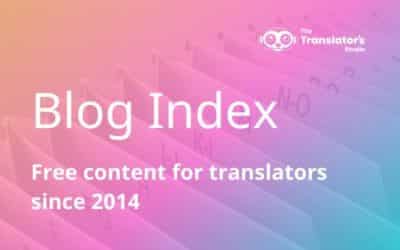All businesses need promotional and marketing strategies. But if you need to reach customers who speak another language, you’ll need to translate your marketing materials. Here’s why press release translation should be part of your multilingual marketing strategy and who’s the best person to do the job.
What is a press release?
Put simply, it’s a piece of writing created to communicate specific information about an event or happening connected to the business. Press releases are usually written to promote a business or organisation. They generate interest in the business and can be used to drive promotions and other marketing.
All kinds of companies use press releases. They are a way of sharing news about the business. They help bring attention to the brand and what it does. Press releases are a useful part of a company’s marketing and promotional strategy.
Press releases can improve SEO if they rank highly for a keyword. Good rankings for Internet searches can help reach customers. Press releases can also help brands come to the attention of other companies to collaborate with. It’s not just big names that use them. Press releases can be a good tool for both big and small businesses.
Making the decision to translate a press release is a key part of a multilingual public relations strategy.
Why do businesses use press releases?
The main purpose of a press release is to promote something significant and specific related to the business. The idea is to inform the media about an event or circumstance and hope they will use it in articles and so on. Companies write press releases to tell the media about their business and hope the story will be picked up and generate publicity.
Press releases are also created to promote businesses on the Internet, in blogs, and on social media and websites. These then get shared and reach a wider audience.
What types of press release are there?
Press releases are generally written when the business has something newsworthy it wants to communicate. But they also work as a way to promote the company. This combination of informing the reader and piquing their interest is more difficult than it sounds. To get that balance right, press releases are usually written by copywriters. A good copywriter knows how to generate interest so that the press release is widely distributed.
Copywriters look for an unusual angle for the press release, to catch the media’s attention and generate publicity for the brand. It could be a charitable activity the brand is involved in. An interesting story about employees. An upcoming event connected to the brand. Maybe the company has used their product to help someone in some way. It could be newsworthy changes in the company, like new products or an award.
For more information about copywriting and marketing translation, read this article about “Why Copywriting is a Key Part of Marketing Translation“.
So, if your brand is expanding into new markets, should you translate your press releases? You might be surprised to learn that lots of companies don’t. Why not? Maybe they’re not sure how to translate a press release effectively. Or perhaps they don’t see it as cost-effective. But they’re missing a trick. Savvy brands know press release translation is important.
Making the decision to translate a press release is a key part of a multilingual public relations strategy. It can make your brand more relevant. You get more coverage online. If, as we said, press releases are an important part of your communication strategy, then press release translation is an important part of your multilingual communication strategy.
Translating press releases helps you reach a wider audience, and this helps you increase your potential customers.
Press releases can be a good tool for both big and small businesses.
Who can translate a press release?
At first glance, press release translation might seem easy. They’re often short pieces of writing and look relatively simple. But press releases are written for a specific purpose. They often contain industry-specific information. Even if they don’t, it’s not easy to get the balance right between grabbing the reader’s interest and giving information. That’s why press releases are written by copywriters, with an understanding of marketing.
To translate the press release effectively, you need a marketing translator who also understands copywriting. It’s not just a case of finding someone who speaks the language. You need a trained linguist with the skills and abilities of a translator and copywriter. For more information, read this article: “Don’t Make This Rookie Error with Your Marketing Translator“.
Help your expert linguist translate a press release that works for your brand by telling them what you need. If you have a list of terms you’ve used elsewhere, let your translator know. The same goes for terms that don’t need translation. Give the translator as much information as you can.
A creative approach to press release translation
Depending on the topic of your press release, your translator might need to take a more creative approach. If you work with a linguist who can offer transcreation and copywriting as well as marketing translation, they can help advise on cultural issues. Heard about transcreation and not sure what is? Read this article: “What is Transcreation (Is It Different to Marketing Translation?)“.
When you use a translator who understands transcreation, they can give you tips on the visuals you’ve chosen for your press release. Or help you with the angle for the story and how it will play in another culture. If you’re working with a translator who’s also a transcreator, they bring copywriting skills to the table as well.
If you’re not sure how to translate a press release, a translator/transcreator with copywriting and SEO skills is your best bet. They can offer the whole package. They can help make sure the visuals and other aspects work in the target market. And their understanding of copywriting and SEO means your press release will have the desired effect.
If you’re still not sure why SEO is important, this article contains a good explanation: “Why SEO is the Future for Business Document Translators“.
How can you know if the translation is good if you can’t understand it? By choosing a professional, you can be assured of good quality. Here’s some more ideas on “How to Make Sure You’re Getting the Best Translation Services“. And if you want more information about how to go about ordering a translation of a press release or any text, here’s a complete guide. It explains the process from start to finish: “How to get a Translation – Complete Customer Guide“.
Follow these steps and make sure you use a trained professional translator each time you translate a press release. The time and money invested will pay off when you generate the leads you want.
Get our newsletter sent straight to your inbox!
Keep up to date with all our posts and courses by signing up for our newsletter in the column to the right.




0 Comments